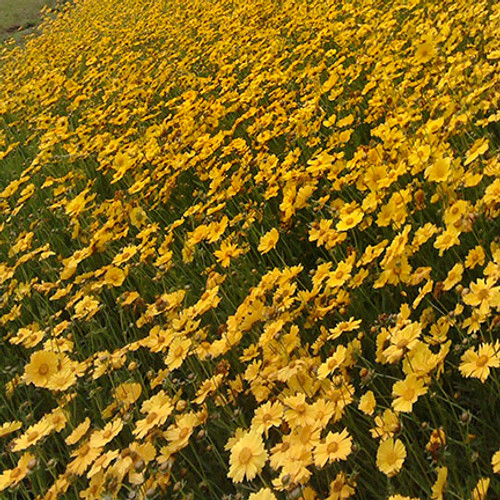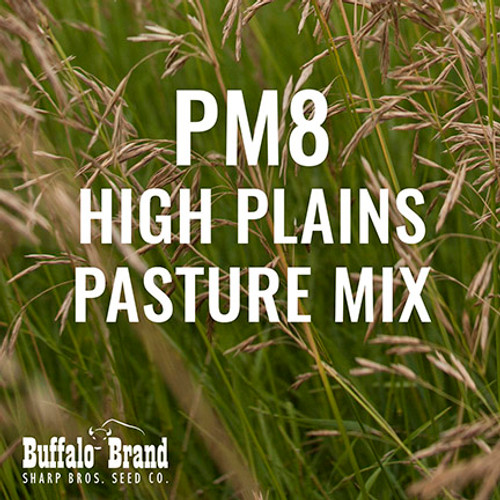Plains Coreopsis is a bright annual that flowers from June to Sept. Lots of very showy yellow flowers with red centers are produced on fairly large branched plants. Central disk is brown.
- Showy Flowers
- Attracts Butterflies
- Great in wildflower seed mixes
Calliopsis is an annual forb which usually germinates in late summer or fall and over-winters as a rosette (round, low growing group of leaves). This is a U.S. native. The stems begin growing upward and branching in spring, reaching a height of up to 4 feet. The opposite leaves are deeply divided, with the upper leaf segments being very narrow. The flowering heads are numerous, 1-2 inches in diameter, and are yellow with a red-brown center.
Height: 24-48 inches
Spread: 12-36 inches
USDA Hardiness zone: 3-8
Uses
This plant is used mainly for landscape beautification. It has potential for use in cultivated, garden situations, in naturalized prairie or meadow plantings, and along roadsides.
Establishment
Full sun and well drained soil are best. Grows naturally in glades and sandy soil, often in disturbed ground. Once established these plants will not need additional watering! Great plant for sunny, hard to water areas. Long season of bloom.
A firm seedbed is required. Calliopsis germinates best on a clean tilled site that has been firmed with a roller or finishing harrow before planting. Seed can also be planted into a closely mowed, chemically-killed, or burned sod area with a light disking or harrowing that scratches the soil surface. A layer of plant residue on the soil surface can interfere with seed germination. Broadcast or shallowly drill 1-2 grams per 100 square feet (1-2 lb/acre). Seed should be placed close to the soil surface. Cultipacking after planting will ensure good seed to soil contact. Seed will germinate soon after planting and remain as a rosette throughout the winter.
Management
Plant growth and seed production are greatly improved by fertilization. Apply fertilizer according to soil test recommendations. If not available, a rate of 3.5-5.5 oz per 100 square feet (100-150 lb/acre) of 13-13-13 should be applied in the spring before flowering. Stands will reseed prolifically for several years, but will gradually decline without soil disturbance. Every two to three years, the site should be disked to control perennial weeds and promote calliopsis germination. If necessary, plants can be mowed in the spring before stem elongation begins. Stands that are not disked should be mowed in late summer, and a late fall mowing is also recommended.
Plant description via USDA-NRCS Plant Database, Plant Fact Sheet: Calliopsis, coreopsis tinctoria







